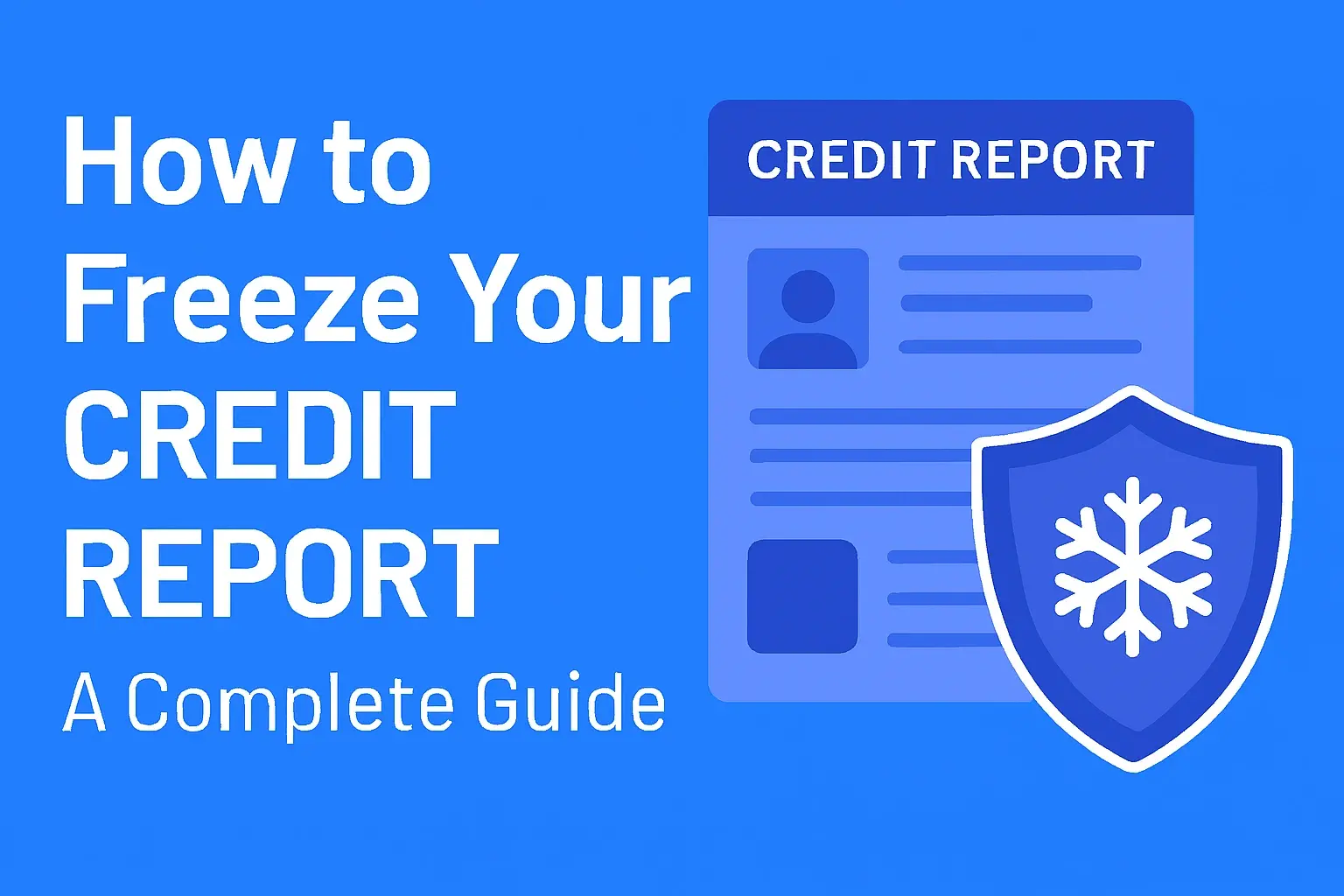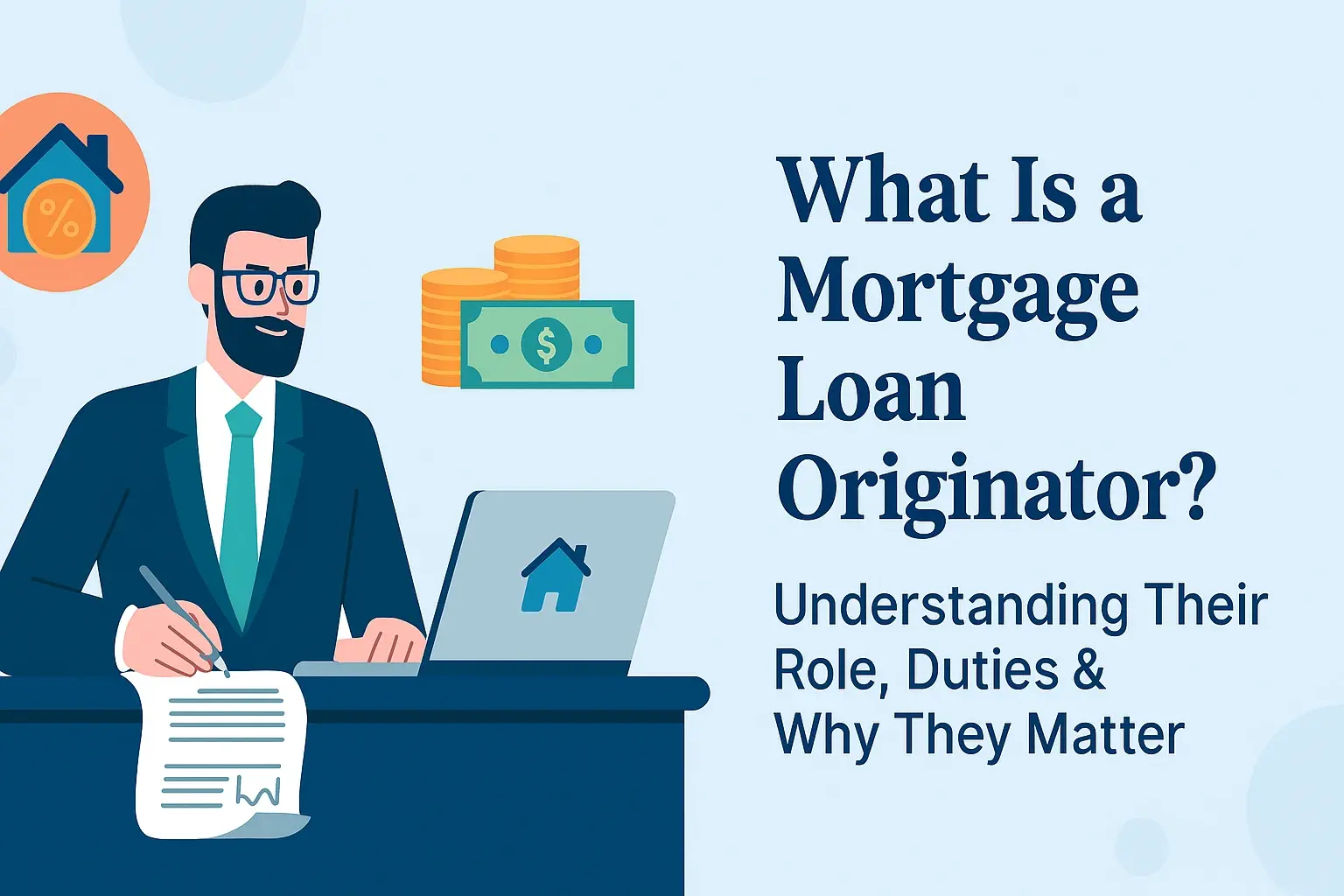-
Posted on: 10 Feb 2025

-
Understanding a 622 credit score is crucial for navigating the financial landscape. This score falls into the "fair" category, presenting both challenges and opportunities for improvement. This guide will demystify what a 622 credit score means and provide actionable strategies to boost it effectively in 2025.
What is a 622 Credit Score?
A 622 credit score is generally considered to be in the "fair" range by most major credit bureaus and scoring models. While not ideal, it's a score that many individuals possess and, importantly, one that can be significantly improved with diligent effort and smart financial habits. This score indicates that lenders may view you as a higher risk compared to those with excellent credit, potentially leading to higher interest rates or loan denials. However, it also means you are not in the "poor" or "very poor" categories, offering a solid foundation for positive change.
Understanding Credit Score Ranges in 2025
Credit scoring models, like FICO and VantageScore, categorize credit scores into ranges to help lenders quickly assess risk. While the exact thresholds can vary slightly between models and over time, the general classifications for 2025 remain consistent. Understanding these ranges is key to knowing where your 622 score stands and what your improvement goals should be.
Score Range (FICO) Category General Implications 800-850 Exceptional Best interest rates, highest approval odds. 740-799 Very Good Excellent loan terms, wide range of options. 670-739 Good Access to most loans with competitive rates. 580-669 Fair May qualify for loans, but with higher interest rates and fees. Limited options. 300-579 Poor Difficult to get approved for credit, very high interest rates, significant restrictions. With a 622 credit score, you fall squarely within the "Fair" category. This means you are above the "Poor" range, which is a positive starting point. However, you are still a considerable distance from the "Good" and "Very Good" ranges, which unlock more favorable lending conditions. The primary goal for anyone with a 622 score should be to move into the "Good" category (670 and above) as quickly and sustainably as possible.
Why a 622 Credit Score Matters
Your credit score is a three-digit number that acts as a financial report card, summarizing your creditworthiness. Lenders, landlords, insurers, and even some employers use it to gauge the likelihood that you will repay debts or fulfill financial obligations. A 622 score, while not disastrous, signals to these entities that there are aspects of your credit behavior that warrant caution. This can manifest in several ways:
- Higher Borrowing Costs: The most immediate impact is often seen in the interest rates offered on loans and credit cards. A fair score means you'll likely pay more in interest over the life of a loan compared to someone with a higher score.
- Limited Loan Approval: While you may still qualify for some loans, your options will be more restricted. Lenders with stricter approval criteria might outright deny your applications.
- Higher Insurance Premiums: In many states, insurance companies use credit-based insurance scores to set premiums for auto and homeowners insurance. A lower score can lead to higher insurance costs.
- Rental Application Challenges: Landlords often check credit scores to assess a tenant's reliability. A 622 score might make it harder to secure a rental property, or you might be asked for a larger security deposit.
- Utility Deposits: Utility companies may require a security deposit if your credit score is below a certain threshold.
The good news is that the factors influencing your credit score are largely within your control. By understanding these factors and implementing targeted strategies, you can systematically improve your 622 score.
Impact of a 622 Credit Score on Loans
Securing a loan with a 622 credit score presents distinct challenges and outcomes compared to having a higher score. Lenders view this score as indicating a moderate level of risk, meaning they are more hesitant to lend and will compensate for that perceived risk through various means. Let's break down the typical impact across different loan types in 2025:
Mortgages
For a mortgage, a 622 score is often at the lower end of what many conventional lenders will approve. While some government-backed loans, like FHA loans, might accept scores in this range (sometimes as low as 580 with a larger down payment), the terms will likely be less favorable. Expect:
- Higher Interest Rates: Even if approved, the interest rate will be significantly higher than for borrowers with good or excellent credit. This translates to substantially larger monthly payments and more interest paid over the 15-30 year term of the mortgage.
- Larger Down Payment: Lenders may require a larger down payment to mitigate their risk.
- Private Mortgage Insurance (PMI): For conventional loans with less than 20% down, PMI is standard. With a 622 score, PMI costs could be considerably higher.
- FHA Loan Limitations: While FHA loans are more accessible, they come with upfront and annual mortgage insurance premiums that can add to your monthly housing costs.
Auto Loans
Getting approved for an auto loan with a 622 score is generally more feasible than a mortgage, but it will still come at a cost. Dealerships and lenders often use subprime auto loan programs for borrowers in this score range. This typically means:
- Elevated Interest Rates: Auto loan interest rates for a 622 score can be in the double digits, significantly increasing the total cost of the vehicle.
- Shorter Loan Terms: Lenders might offer shorter repayment terms to reduce their exposure, leading to higher monthly payments.
- Limited Vehicle Selection: You might find your choices limited to older or less desirable vehicles, as lenders may be hesitant to finance newer, more expensive models.
Personal Loans
Personal loans are often sought for debt consolidation, unexpected expenses, or home improvements. With a 622 credit score:
- Higher Interest Rates: Expect interest rates that are considerably higher than prime borrowers. This can make debt consolidation less effective if the new loan's rate is still too high.
- Loan Amount Restrictions: You may be approved for a smaller loan amount than you need.
- Shorter Repayment Periods: Similar to auto loans, shorter terms might be offered, increasing monthly payments.
- Online Lenders: You might find more options with online lenders specializing in subprime loans, but careful comparison of terms is essential.
Credit Cards
Securing a traditional rewards credit card with a 622 score is unlikely. Instead, you'll likely be looking at:
- Secured Credit Cards: These require a cash deposit that typically becomes your credit limit. They are excellent for building or rebuilding credit but offer few perks.
- Subprime Credit Cards: These cards often come with high annual fees, high interest rates, and low credit limits. They can be a tool for improvement but must be managed very carefully to avoid accumulating debt and fees.
The overarching theme for a 622 credit score is that while access to credit is possible, it comes with a premium in the form of higher costs and fewer options. This underscores the importance of taking proactive steps to improve your score.
How to Improve a 622 Credit Score: Step-by-Step
Improving a 622 credit score requires a strategic and consistent approach. It's not about quick fixes, but rather about building a solid foundation of responsible credit management. Here’s a step-by-step guide designed to help you systematically boost your score:
Step 1: Obtain and Review Your Credit Reports
Before you can improve your score, you need to understand what's contributing to it. You are entitled to a free copy of your credit report from each of the three major credit bureaus (Equifax, Experian, and TransUnion) once every 12 months at AnnualCreditReport.com. Scrutinize these reports for any inaccuracies, such as:
- Accounts that do not belong to you.
- Incorrect personal information (name, address, Social Security number).
- Late payments that you know were made on time.
- Incorrect balances or credit limits.
- Accounts that have been incorrectly reported as closed or delinquent.
Disputing errors is a crucial first step, as removing inaccuracies can provide an immediate score boost.
Step 2: Dispute Any Errors on Your Credit Reports
If you find inaccuracies, act immediately. You can dispute errors directly with the credit bureaus online, by mail, or by phone. Provide as much documentation as possible to support your claim. The credit bureaus have a legal obligation to investigate your dispute within a reasonable timeframe (typically 30-45 days). If the information is found to be inaccurate, it must be corrected or removed from your report.
Step 3: Prioritize On-Time Payments
Payment history is the single most significant factor influencing your credit score, accounting for about 35% of your FICO score. Even a single missed payment can have a detrimental effect. For a 622 score, ensuring every single payment is made on time, every time, is paramount.
- Set Up Autopay: For recurring bills like credit cards, loans, and utilities, set up automatic payments from your bank account. This is the most effective way to prevent accidental late payments.
- Use Calendar Reminders: If autopay isn't an option or you prefer manual payments, set up calendar alerts a few days before the due date.
- Pay at Least the Minimum: If you're ever in a situation where you can't pay the full statement balance, always pay at least the minimum amount due by the deadline. This prevents a late payment mark on your report.
Step 4: Reduce Your Credit Utilization Ratio (CUR)
Credit utilization is the amount of credit you are using compared to your total available credit. It accounts for about 30% of your FICO score. A high CUR signals to lenders that you may be overextended. For a 622 score, aim to keep your CUR below 30%, and ideally below 10% for the best results.
- Pay Down Balances: Aggressively pay down balances on your credit cards. Focus on cards with the highest utilization first, or use the debt snowball/avalanche method.
- Request Credit Limit Increases: If you have a good payment history with a particular card issuer, consider requesting a credit limit increase. If approved, this will lower your CUR without you having to spend less (assuming your spending remains the same).
- Avoid Maxing Out Cards: Never let your credit card balances get close to their limits.
Step 5: Avoid Opening Too Many New Credit Accounts
Opening multiple new credit accounts in a short period can negatively impact your score. Each application typically results in a "hard inquiry" on your credit report, which can temporarily lower your score by a few points. While inquiries have a relatively small impact (around 10% of your score), multiple hard inquiries can signal increased risk to lenders. If you need to open new accounts (e.g., a secured card), do so strategically and space them out.
Step 6: Consider a Secured Credit Card or Credit-Builder Loan
If you have limited credit history or significant negative marks, a secured credit card or a credit-builder loan can be invaluable tools. These products are designed to help individuals establish or rebuild credit responsibly.
- Secured Credit Cards: You provide a cash deposit (e.g., $200-$500) that acts as your credit limit. Use it for small, everyday purchases and pay it off in full each month.
- Credit-Builder Loans: The loan amount is held in an account by the lender and released to you after you've made all the payments. Your on-time payments are reported to credit bureaus.
Ensure the issuer of the secured card or loan reports to all three major credit bureaus. This is essential for it to positively impact your credit score.
Step 7: Be Patient and Consistent
Credit score improvement is a marathon, not a sprint. While you might see some initial gains from correcting errors or reducing utilization, significant and lasting improvement takes time. Stick to your plan of on-time payments and responsible credit management. Over months and years, your positive credit behavior will be reflected in your score.
Key Factors Affecting Your Credit Score
Understanding the components that make up your credit score is fundamental to improving it. Credit scoring models, primarily FICO and VantageScore, weigh several factors differently. While the exact algorithms are proprietary, the general categories and their approximate influence are well-established. For a 622 score, focusing on the most impactful factors will yield the best results.
Payment History (Approximately 35% of FICO Score)
This is the most critical factor. It reflects whether you pay your bills on time. Late payments, missed payments, defaults, bankruptcies, and collections all severely damage this aspect of your score. Even a single 30-day late payment can drop your score significantly. Conversely, a consistent history of on-time payments is the bedrock of a good credit score.
Amounts Owed / Credit Utilization (Approximately 30% of FICO Score)
This refers to the total amount of debt you carry across all your credit accounts and, more importantly, your credit utilization ratio (CUR). The CUR is the ratio of your revolving credit balances to your total revolving credit limits. A high CUR (e.g., using 80% of your available credit) suggests you are heavily reliant on credit and may be at risk of default. Keeping this ratio low, ideally below 30% and even better below 10%, is crucial.
Length of Credit History (Approximately 15% of FICO Score)
This factor considers the age of your oldest account, the age of your newest account, and the average age of all your accounts. A longer credit history generally indicates more experience managing credit, which is viewed favorably. To improve this, avoid closing old, unused credit accounts, as this can shorten your average account age.
Credit Mix (Approximately 10% of FICO Score)
This refers to the variety of credit accounts you have, such as credit cards (revolving credit) and installment loans (mortgages, auto loans, student loans). Having a mix of different credit types can be beneficial, as it shows you can manage various forms of credit. However, this factor is less important than payment history and utilization, and you shouldn't open new types of credit solely to improve your mix.
New Credit (Approximately 10% of FICO Score)
This factor considers how many new accounts you've opened recently and the number of hard inquiries on your report. Opening many new accounts in a short period can signal higher risk, as can multiple hard inquiries. While a few inquiries are generally not a major concern, a spree of new applications can negatively impact your score.
For someone with a 622 credit score, the most significant gains will come from diligently addressing payment history and credit utilization. These two factors alone account for 65% of the FICO score, making them the primary focus for improvement.
Strategies for Improving Payment History
As the most influential factor in your credit score, a positive payment history is non-negotiable for moving beyond a 622 score. Even a single missed payment can undo months or years of good work. Here are actionable strategies to ensure your payment history becomes a strong asset:
1. Automate Your Payments
This is the single most effective strategy to prevent missed payments. Set up automatic payments for all your credit accounts (credit cards, loans, mortgages, car payments) and even utility bills that report to credit bureaus. Ensure you have sufficient funds in your bank account to cover these payments to avoid overdraft fees and potential payment failures.
2. Set Up Multiple Reminders
If you prefer not to automate or want an extra layer of security, use multiple reminder systems. This could include:
- Calendar Alerts: Set reminders on your smartphone or computer calendar a few days before each bill is due.
- Sticky Notes: Place physical reminders in visible locations.
- Bank App Notifications: Many banking apps allow you to set up bill payment reminders.
3. Pay More Than the Minimum (When Possible)
While paying the minimum on time prevents a late fee and a negative mark, it doesn't help you reduce debt quickly and can lead to substantial interest charges. If your budget allows, aim to pay more than the minimum. This not only reduces your debt faster but also helps lower your credit utilization ratio.
4. Contact Lenders Proactively if You Anticipate Difficulty
Life happens. If you foresee a situation where you might struggle to make a payment on time (e.g., job loss, unexpected medical expenses), contact your lender *before* the due date. Many lenders are willing to work with borrowers to find a temporary solution, such as a deferred payment or a modified payment plan. This proactive communication can often prevent a missed payment from being reported to the credit bureaus.
5. Understand Due Dates vs. Grace Periods
Be aware of your exact due dates. Credit card companies typically offer a grace period (usually 21-25 days) between the end of the billing cycle and the payment due date. If you pay your statement balance in full by the due date, you won't be charged interest. However, missing the due date means you'll incur interest and potentially a late fee, even if you pay within a few days. For installment loans, the due date is the absolute deadline.
6. Catch Up on Past-Due Accounts Immediately
If you have any accounts that are currently past due, make it your top priority to bring them current. Even if the damage has been done, bringing an account back into good standing is crucial for preventing further harm and for the score to eventually recover.
Managing Credit Utilization Ratio (CUR) Effectively
Credit utilization is the second most critical factor influencing your credit score, accounting for approximately 30% of your FICO score. A high CUR signals to lenders that you are heavily reliant on credit, which can be perceived as a risk. For a 622 score, reducing and maintaining a low CUR is essential for improvement.
Understanding Your CUR
Your CUR is calculated by dividing the total balance owed on your revolving credit accounts (like credit cards) by your total available credit limit on those accounts. For example, if you have a credit card with a $1,000 balance and a $3,000 limit, your utilization on that card is 33.3% ($1,000 / $3,000). If you have multiple cards, you sum up all balances and all limits to get your overall CUR.
Target CUR: Below 30%, Ideally Below 10%
While keeping your CUR below 30% is generally recommended, aiming for below 10% can provide a more significant boost to your score. Lenders often view a CUR below 10% as a sign of excellent credit management.
Actionable Strategies to Lower CUR:
1. Pay Down Balances Aggressively
This is the most direct way to lower your CUR. Focus your efforts on paying down the balances on your credit cards. Prioritize cards with the highest utilization first, or use a debt repayment strategy like the debt avalanche (paying off highest interest rates first) or debt snowball (paying off smallest balances first) to stay motivated.
2. Make Multiple Payments Per Month
Don't wait for your statement closing date. If you make purchases throughout the month, consider making payments more frequently. For instance, if your statement closes on the 25th and your due date is the 15th, you could make a payment around the 10th to pay down the balance before it's reported to the credit bureaus. This can effectively lower your reported utilization.
3. Request Credit Limit Increases
If you have a good payment history with a particular credit card issuer, consider requesting a credit limit increase. If approved, this instantly lowers your CUR, assuming your spending habits remain the same. Be sure to ask if the issuer performs a "hard pull" or "soft pull" for this request; a soft pull won't affect your credit score.
4. Avoid Maxing Out Credit Cards
Never let your credit card balances get close to their limits. This significantly increases your CUR and can make it harder to pay down the debt. If you find yourself frequently approaching your limit, it might be a sign that you are spending beyond your means.
5. Consider Balance Transfers (with Caution)
If you have high-interest debt, a balance transfer to a card with a 0% introductory APR can help you pay down the principal faster. However, be mindful of balance transfer fees and the interest rate after the introductory period ends. Ensure you have a plan to pay off the balance before the promotional period expires.
6. Don't Close Unused Credit Cards (Usually)
Closing an old credit card reduces your total available credit, which can increase your CUR even if your balances remain the same. Unless a card has a high annual fee that you can no longer justify, it's often better to keep it open and use it sparingly to maintain your credit history and available credit.
By actively managing your credit utilization, you demonstrate responsible credit behavior, which is a powerful signal to credit scoring models and lenders, directly contributing to the improvement of your 622 credit score.
Lengthening Your Credit History
The length of your credit history accounts for about 15% of your FICO score. This factor looks at how long your accounts have been open, the age of your oldest account, and the average age of all your accounts. A longer credit history generally indicates more experience managing credit over time, which is viewed positively by lenders.
Why a Longer Credit History Matters
Credit scoring models assume that individuals who have managed credit responsibly over many years are less likely to default than those with short or limited credit histories. A longer track record provides more data points for lenders to assess your financial behavior.
Strategies for Improving This Factor:
1. Keep Old Accounts Open
The most effective way to increase the average age of your accounts is to keep your oldest credit accounts open, even if you don't use them frequently. Closing an old account can reduce your average account age and decrease your total available credit, potentially hurting your credit utilization ratio.
Example: If your oldest credit card was opened 10 years ago, and you open a new one today, your average account age will decrease. If you then close the 10-year-old card, your average age will drop even further.
2. Use Old Accounts Periodically
To prevent card issuers from closing inactive accounts, make a small purchase on your oldest cards every few months (e.g., a tank of gas, a streaming service subscription) and pay it off immediately. This demonstrates continued activity and ensures the account remains open and contributes to your credit history length.
3. Avoid Opening Too Many New Accounts Too Quickly
While opening new credit can be necessary for rebuilding or establishing credit, doing so too frequently can significantly lower your average account age. Space out new applications, especially if you are trying to improve your credit history length.
4. Be Patient
This is one of the credit score factors that you cannot significantly influence in the short term. The best approach is consistent, responsible credit management over time. As the years pass and your existing accounts age, this factor will naturally improve.
For someone with a 622 score, focusing on keeping existing accounts open and using them judiciously is the primary strategy. While it takes time, this factor contributes to a more robust and trustworthy credit profile.
Understanding Credit Mix and New Credit
These two factors, while less impactful than payment history and utilization, still play a role in your overall credit score. They collectively account for about 20% of your FICO score.
Credit Mix (Approximately 10% of FICO Score)
Credit mix refers to the variety of credit accounts you have. This includes revolving credit (like credit cards) and installment loans (like mortgages, auto loans, personal loans, student loans). Having a mix of different credit types can be beneficial because it shows you can manage various forms of debt responsibly.
How to Improve Credit Mix:
- Demonstrate Responsible Management: The key is not just having different types of credit, but managing them well. A history of on-time payments on both credit cards and installment loans is more valuable than having many of one type with a poor payment history.
- Don't Open Accounts Solely for Mix: It's generally not advisable to open new accounts solely to improve your credit mix, especially if you don't need them. The potential negative impact of new inquiries and a shorter credit history often outweighs the benefit of a slightly improved mix.
- Focus on Existing Accounts: If you already have a mix of credit, focus on managing those accounts responsibly. If you only have credit cards, consider if an installment loan (like a small personal loan or credit-builder loan) might be a sensible addition in the future, but only if you can comfortably manage the payments.
New Credit (Approximately 10% of FICO Score)
This factor assesses your recent credit activity. It looks at how many new credit accounts you've opened recently and the number of hard inquiries on your credit report. Opening several new accounts in a short period can signal increased risk to lenders, as it might indicate financial distress or an attempt to take on too much debt.
How to Manage New Credit:
- Limit New Applications: Apply for new credit only when necessary. Avoid applying for multiple credit cards or loans within a short timeframe.
- Understand Hard vs. Soft Inquiries:
- Hard Inquiries: Occur when you apply for new credit (e.g., credit card, mortgage, auto loan). These can temporarily lower your score by a few points. Multiple hard inquiries in a short period can have a more significant impact.
- Soft Inquiries: Occur when you check your own credit score, are pre-approved for an offer, or when employers check your credit for background checks. These do not affect your credit score.
- Rate Shopping Exception: For certain types of loans, like mortgages and auto loans, credit scoring models are designed to treat multiple inquiries within a short period (typically 14-45 days) as a single inquiry for scoring purposes. This allows you to shop around for the best rates without excessive penalty.
For someone with a 622 credit score, the focus should be on responsible management of existing accounts and being judicious about new credit applications. A slightly improved credit mix might offer a small boost, but maintaining a low number of recent inquiries and new accounts is more critical for preventing score dips.
Dealing with Errors on Your Credit Report
Errors on your credit report can significantly drag down your score, sometimes unfairly. Identifying and correcting these inaccuracies is a critical step in improving a 622 credit score. Common errors include incorrect personal information, accounts that don't belong to you, inaccurate payment statuses, or incorrect balances.
Steps to Dispute Errors:
1. Obtain Your Credit Reports
As mentioned earlier, get your free reports from Equifax, Experian, and TransUnion at AnnualCreditReport.com. Review each report thoroughly, as errors can sometimes appear on only one or two of them.
2. Identify the Specific Error
Note down exactly what is incorrect on the report. Be precise. For example, "Account number XXXX listed as delinquent, but I made all payments on time."
3. Gather Supporting Documentation
Collect any evidence that supports your claim. This could include:
- Copies of canceled checks or bank statements showing payments made.
- Correspondence with creditors.
- Court records if the error relates to legal judgments.
- Identification documents if personal information is incorrect.
4. File a Dispute with the Credit Bureau(s)
You can file disputes online, by mail, or by phone. The online method is often the quickest. When filing, clearly state the error and provide your supporting documentation. You can file a dispute with each bureau that shows the error.
5. The Investigation Process
Once you file a dispute, the credit bureau has 30-45 days to investigate. They will contact the furnisher of the information (the creditor or lender) to verify the accuracy. If the furnisher cannot verify the information, or if it's found to be inaccurate, it must be corrected or removed from your report.
6. Follow Up
If the investigation doesn't resolve the issue or if the error reappears, follow up with the credit bureau. You can also send a follow-up letter outlining the issue and requesting further action. If you believe the credit bureau or furnisher is not complying with regulations, you may consider contacting the Consumer Financial Protection Bureau (CFPB) or seeking legal advice.
7. Consider a Consumer Protection Attorney
If you encounter persistent issues or believe there's intentional wrongdoing, a consumer protection attorney can help you understand your rights and take appropriate action.
Correcting errors can lead to an immediate and significant improvement in your credit score, making it a crucial step for anyone aiming to move beyond a 622 score.
Timeframe for Credit Score Improvement
Improving a credit score is a journey, not an overnight transformation. The timeframe for seeing significant gains beyond a 622 score depends heavily on the specific issues present on your credit report and the consistency of your efforts. Here’s a realistic outlook:
Short-Term Improvements (1-6 Months)
- Correcting Errors: If you have significant inaccuracies on your credit report, correcting them can lead to a noticeable score increase within 30-60 days after the dispute is resolved.
- Reducing Credit Utilization: Paying down high credit card balances can show positive results relatively quickly. If you can lower your overall utilization to below 30% or even 10%, you might see your score jump by 20-50 points or more within a billing cycle or two.
- Bringing Accounts Current: If you have recently missed payments, bringing those accounts up to date will stop further damage and begin the process of recovery.
Medium-Term Improvements (6-18 Months)
- Establishing Positive Payment History: Consistently making on-time payments for 6-12 months will start to outweigh the impact of past negative marks.
- Maintaining Low Utilization: Consistently keeping your credit utilization low demonstrates sustained responsible behavior.
- Secured Cards/Credit-Builder Loans: Using these tools consistently for 6-12 months and making all payments on time will build a positive credit history that starts to influence your score.
Long-Term Improvements (18 Months and Beyond)
- Aging of Negative Information: The most severe negative marks, like bankruptcies or foreclosures, will eventually fall off your credit report (typically after 7-10 years). Their impact diminishes significantly over time, and they eventually disappear entirely.
- Building a Long Credit History: As your accounts age and your overall credit history lengthens, your score will naturally improve, provided you maintain good habits.
- Achieving "Good" or "Excellent" Status: Moving from a 622 score to the "Good" (670-739) or "Very Good" (740-799) range typically takes at least 1-2 years of dedicated, consistent positive credit management. Reaching "Exceptional" (800+) can take several years.
Factors Influencing the Speed of Improvement:
- Severity of Negative Marks: A few 30-day late payments will recover faster than a bankruptcy or multiple defaults.
- Number of Negative Marks: More negative items generally mean a longer recovery period.
- Consistency of Positive Actions: Regular on-time payments and low utilization are key.
- Credit Report Accuracy: Ensuring your report is free of errors is vital.
The most important takeaway is that consistent, responsible behavior is the engine of credit score improvement. While a 622 score can feel like a hurdle, with a strategic plan and patience, you can significantly enhance your financial standing.
Alternative Lending Options with a 622 Score
While a 622 credit score may limit your options with traditional lenders, several alternative lending avenues can provide access to credit. These often come with different terms and conditions, so careful evaluation is necessary.
1. Credit Unions
Credit unions are member-owned financial cooperatives that may offer more flexible lending criteria than traditional banks. They often prioritize member relationships and may be willing to look beyond just the credit score, considering your overall financial picture and history with the credit union.
2. Online Lenders (Fintech Companies)
Many online lenders specialize in serving borrowers with fair or even poor credit. These platforms often use alternative data and more sophisticated algorithms to assess risk. While they can offer quick approvals, interest rates can be higher than traditional lenders. Examples include:
- Peer-to-Peer (P2P) Lending Platforms: These connect borrowers directly with investors.
- Specialty Online Lenders: Companies focused on subprime lending.
Always compare offers from multiple online lenders and read the fine print carefully.
3. Secured Loans
Secured loans require collateral, such as a savings account, car title, or other assets. Because the lender has an asset to seize if you default, they are often more willing to lend to individuals with lower credit scores. Examples include:
- Secured Personal Loans: Backed by savings or CDs.
- Auto Title Loans: Use your car title as collateral (use with extreme caution due to very high costs and risk of losing your vehicle).
4. Co-signer
If you have a friend or family member with excellent credit who is willing to co-sign a loan for you, this can significantly improve your chances of approval and potentially secure better terms. However, remember that the co-signer is equally responsible for the debt, and their credit score will be affected if payments are missed.
5. Buy Here, Pay Here (BHPH) Dealerships
For auto loans, BHPH dealerships handle financing in-house. They typically focus less on credit scores and more on your ability to make weekly or bi-weekly payments. However, interest rates are usually very high, and the vehicles may be older or less reliable.
6. Rent-to-Own Programs
While not a loan, rent-to-own agreements for furniture, appliances, or electronics allow you to acquire items with no credit check. However, the total cost is usually much higher than purchasing outright or financing through a traditional lender.
When considering alternative lending options, it's crucial to understand the total cost of borrowing, including interest rates, fees, and any collateral requirements. Prioritizing options that report to credit bureaus can help you build positive credit history while managing your current financial needs.
Building Credit from Scratch or Rebuilding
Whether you're starting with no credit history or trying to recover from past financial missteps, the principles for building or rebuilding credit are similar and essential for moving beyond a 622 score. The goal is to establish a consistent record of responsible credit management.
1. Secured Credit Cards
These are often the most accessible tools for individuals with no credit or a low credit score. You provide a refundable cash deposit, which typically becomes your credit limit. Use the card for small, recurring expenses (like gas or groceries) and pay the balance in full and on time each month. Ensure the card issuer reports to all three major credit bureaus.
Example: A $300 deposit on a secured card gives you a $300 credit limit. Using $50 of that limit results in a 16.7% utilization ratio, which is excellent.
2. Credit-Builder Loans
These are small loans specifically designed to help you build credit. The loan amount is held in an escrow account by the lender and released to you only after you have paid off the loan in full. Your on-time payments are reported to the credit bureaus. This method forces you to save while building credit.
3. Authorized User Status
If you have a trusted family member or friend with excellent credit who is willing to add you as an authorized user on their credit card, their positive payment history can reflect on your credit report. However, ensure the primary cardholder manages the account responsibly, as their mistakes can also impact your credit.
4. Co-signed Loans
As mentioned previously, having a co-signer can help you qualify for loans you might not otherwise get. This is a powerful tool for rebuilding, but it requires a responsible co-signer and a commitment from you to make payments on time.
5. Rent and Utility Reporting Services
Some services allow you to have your rent and utility payments reported to credit bureaus. While not all lenders weigh these as heavily as traditional credit accounts, they can contribute to your credit profile, especially for those with limited credit history.
6. Responsible Use of Any New Credit
Once you have secured a credit card or loan, the most critical step is consistent, responsible use:
- Always Pay on Time: This is paramount. Automate payments or set multiple reminders.
- Keep Balances Low: Maintain a low credit utilization ratio (ideally below 30%, better below 10%).
- Avoid Maxing Out: Never get close to your credit limit.
- Monitor Your Reports: Regularly check your credit reports for accuracy and to track your progress.
Building or rebuilding credit takes time and discipline. By leveraging these tools and committing to responsible financial habits, you can steadily improve your credit score from a 622 towards a more favorable range.
Preventing Future Credit Score Dips
Once you've worked hard to improve your 622 credit score, the next crucial step is to prevent it from falling again. This involves maintaining the positive habits you've established and being mindful of potential pitfalls.
1. Maintain Consistent On-Time Payments
This cannot be stressed enough. Continue to automate payments or set up robust reminder systems for all your credit obligations. Even one missed payment can cause a significant score drop.
2. Keep Credit Utilization Low
Continue to monitor your credit utilization ratio and strive to keep it below 30%, ideally below 10%. Avoid carrying high balances on your credit cards. If you increase your spending, ensure you also increase your payments accordingly.
3. Avoid Unnecessary New Credit Applications
Only apply for new credit when you genuinely need it. Each application can result in a hard inquiry, and multiple applications in a short period can lower your score. Weigh the benefits of a new credit line against the potential impact on your score.
4. Monitor Your Credit Reports Regularly
Continue to check your credit reports from Equifax, Experian, and TransUnion at least annually. This helps you catch any new errors, fraudulent activity, or incorrect information that could negatively affect your score.
5. Be Wary of Credit Repair Scams
If you receive unsolicited offers for "quick credit repair" or promises of removing legitimate negative information, be highly skeptical. Legitimate credit improvement takes time and responsible financial behavior. Legitimate credit counseling services can be helpful, but avoid companies that make unrealistic guarantees.
6. Understand the Impact of Closing Old Accounts
As mentioned earlier, closing old, unused credit cards can reduce your total available credit and increase your utilization ratio, potentially lowering your score. Unless there's a compelling reason (like a high annual fee), it's often best to keep older accounts open and use them sparingly.
7. Manage Debt Responsibly
If you take on new debt (like a mortgage or car loan), ensure you can comfortably afford the monthly payments. Avoid taking on more debt than you can manage, as this can lead to missed payments and financial strain.
8. Plan for Major Life Events
Significant life changes like job loss, divorce, or illness can impact your ability to manage finances. Having an emergency fund can help buffer against unexpected events and prevent them from derailing your credit management efforts.
By staying vigilant and sticking to responsible credit habits, you can protect your improved credit score and ensure long-term financial health.
Conclusion: Your Path to a Better Credit Score
A 622 credit score is a stepping stone, not a permanent destination. It signifies a "fair" credit standing, presenting opportunities for improvement that can unlock better financial products and lower costs. By understanding the key factors that influence your score—payment history, credit utilization, length of credit history, credit mix, and new credit—you gain the power to make targeted changes. The journey from a 622 score to a "good" or "excellent" rating requires dedication, consistency, and a strategic approach. Prioritize on-time payments, aggressively reduce credit card balances to lower your utilization ratio, and be patient as your positive actions accumulate over time. Regularly reviewing your credit reports for errors and disputing any inaccuracies is also a critical step. While alternative lending options exist for those with fair credit, the ultimate goal should always be to build a strong, positive credit history that grants access to the most favorable terms. By implementing the actionable steps outlined in this guide, you are well-equipped to not only improve your 622 credit score but also to maintain a healthy credit profile for years to come.











